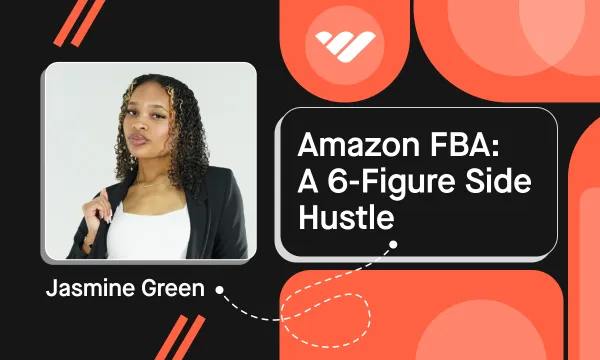The internet has made it possible for anyone to sell products from anywhere. Australians can sell to Americans and vice versa without needing a brick-and-mortar store, which has made selling online a particularly desirable business proposition for those who want to make money from the comfort of their own home.
Each month, more than 7,000 people ask Google how to sell products online. If you’re one of them, look no further. Whether you want to sell physical products via your own online store or you want to sell digital downloads on a popular marketplace, this guide will tell you everything you need to know.
1. Find Your Niche
First things first, find your market. This is the industry or niche you’re going to target with your products. For example, will you create products for the fitness industry or the beauty industry?
When you choose your niche market, you’re also choosing who your competitors are and, in many ways, the people you’re going to sell to (more on that later, though).
When choosing your niche, consider:
- Your interests: What do you enjoy?
- Your skills: What are you good at?
- External demand: What is there a need for?
A good niche is the perfect mix of your interests, skills, and demands. If you skip one of these, you could end up with a product you hate, that’s not as good as the competition, or that there’s simply no demand for.
Once you’ve chosen your niche, it’s time to assess the market.
Research the competition
Start by exploring other brands in your niche. This will give you a good idea about what products are popular and what you’re up against.
Understanding your competitors will also help you create effective marketing campaigns and figure out where your products fit into the market. The last thing you want to do is create a copycat product that no one buys because there’s already an established brand doing well at it.
Here’s how you can research the competition:
- Start with a general Google search for “top brands in [your niche]” to find out who the big players are.
- Make a note of what products they sell, who their target audience is, and any branding or marketing activities that help them stand out.
- Use a keyword research tool to find out what phrases your competitors are ranking for. This will help you determine what products people are searching for and the exact words they use to find them.
- Follow your competitors on social media to see how they promote their products and what messaging they use.
Taking the time to research your competitors will help you find the sweet spot — you ideally want the perfect balance of a product that’s in demand but doesn’t have loads of competition.
Evaluate your idea
Before you start contacting manufacturers or designing your logo in Canva, check that your idea has legs. The easiest way to do that is to see if there are already products like yours that sell well.
You also want to make sure your product offers something a little different so you can stand out (especially if you’re entering a particularly saturated market).
Here are some ways you can evaluate your idea:
- Use Google Trends to determine the interest in your idea over a specific time period
- Survey potential customers to see whether there’s a need for your product idea
- Pre-sell your product before you’ve made it to see if there’s a demand for it
Google Trends shows that searches for “AI tools” have shot up in the past five years. It’s safe to say that there’s a need (or, at least, a very real interest) in AI tools right now.
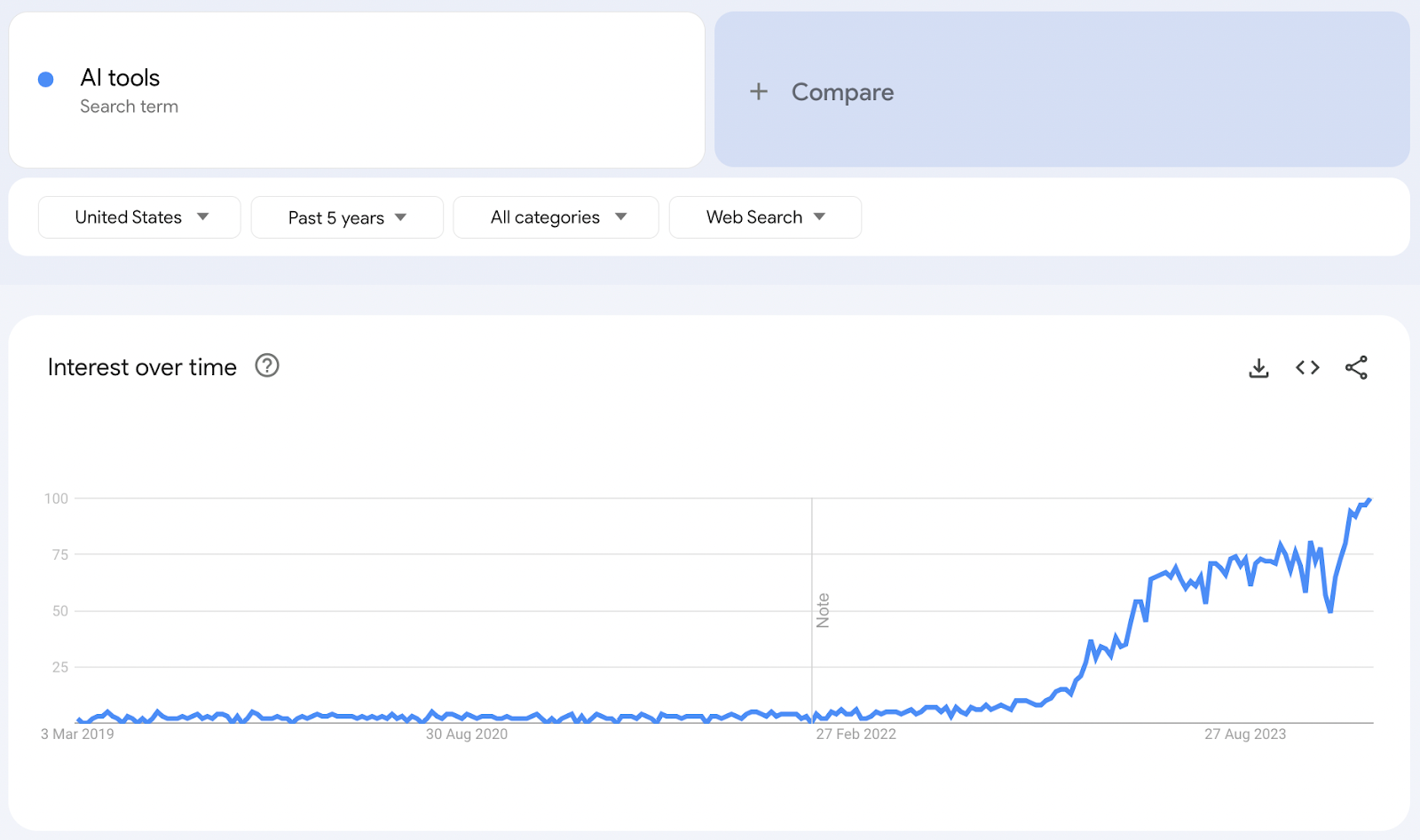
Identify your unique selling point (USP)
There’s competition in every niche — and if there’s not, there’s usually a reason, such as a lack of need.
To stand out, you need to offer something slightly different to your competitors. For example, your USP could be that your product is the cheapest option in the market, or it might be the only type of product that’s for a specific audience (like a frying pan especially for kids).
You can identify your USP by asking yourself these questions:
- What makes my product different from others on the market?
- How will I make sure my product stands out?
- What’s the biggest selling point of my product (e.g. price or ingredients)?
- How do my skills and experience make my product better than anything else out there?
Remember, your USP might be you, especially if you’re selling digital products like online courses, templates, and masterclasses.
Now you’ve identified what market you want to enter, it’s time to think about who’s going to buy your product.
2. Establish Your Audience and Develop a Buyer Persona
Your audience will determine how you market your products and your brand messaging. Choosing who will buy your products is a critical stage in selling online because it can define the trajectory of your business. For example, you can have two recipe brands selling weekly meal prep plans, but one does it for broke college students and another does it for busy parents.
Despite these two brands selling very similar products, their audiences demand totally different things, including totally different price tags (broke college students probably aren’t going to pay as much as busy parents).
Here’s how you can find your audience.
Create a buyer persona
The easiest way to pinpoint your unique target audience is to create a buyer persona. This is a fictional profile of someone who closely represents the kind of person you want to buy your products. It includes key characteristics, like their age, location, and job title, but it can also include psychographic details that inform their buying habits.
Here are some things to consider when creating your buyer persona:
- Age
- Gender
- Location
- Job title or industry
- Interests
- Favorite media or TV shows
- Biggest pain points when it comes to your industry
- Challenges
- Dreams and aspirations
Identifying your target audience’s age and gender is a great way to start narrowing down your buyer persona, but going one step further and spotlighting pain points and challenges can help you market your products better.
For example, let’s say you want to sell yoga videos online and have identified your audience as women aged 18-40. This is a huge segment of the population and the needs of each woman will be very different. Instead, home in further by targeting women aged 18-40 who work full-time jobs and struggle to find the time to practice yoga around their busy lives.
Get to know your target audience
Once you’ve chosen a specific audience segment to target, try to get to know them as best as you can. This information will fuel your product development and how you position your products in the market.
Here are some ways you can do this:
- Social listening: Check out relevant hashtags on social media and see what your target audience is talking about. What questions are they asking? What issues are close to their hearts?
- Surveys: Conduct an online survey that asks your target audience to share their challenges and pain points. There’s nothing quite like hearing this directly from the mouths of the people you want to reach.
- Customer research: Scour forums and relevant Facebook groups to find out more about the struggles, dreams, and aspirations of your target audience.
3. Decide on a Product to Sell
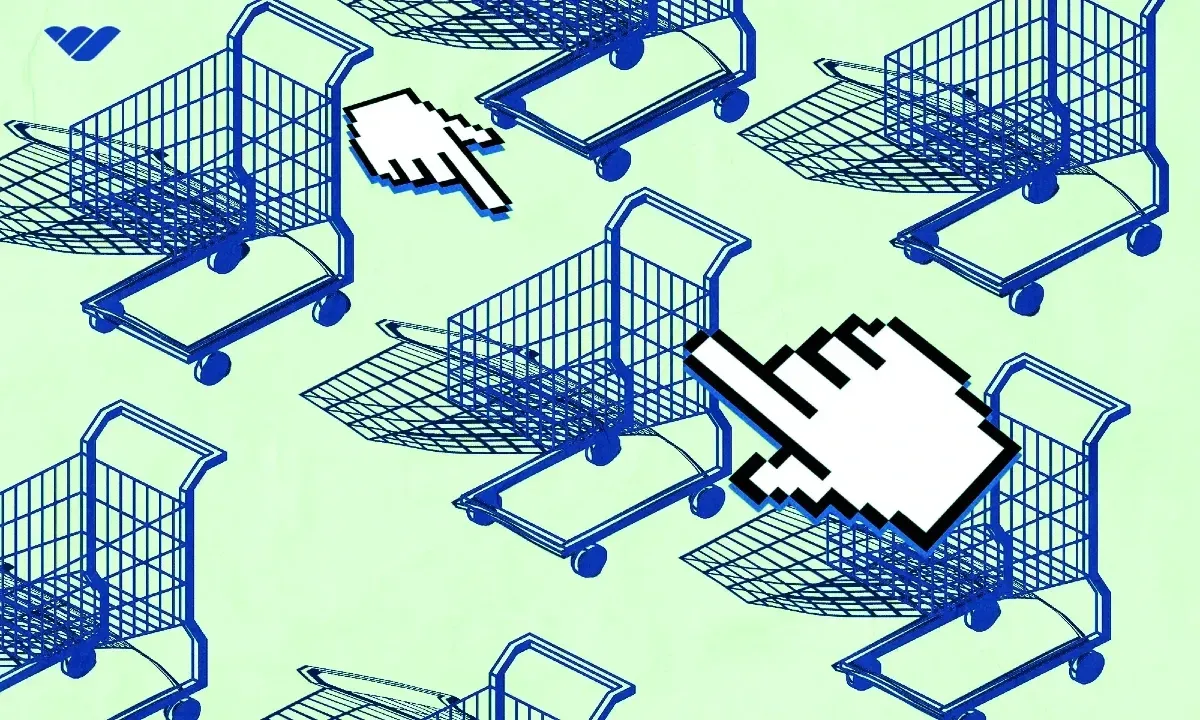
Next, you can start thinking about the product you want to sell. This should be based on your market and audience research so that you know there’s demand for your product.
Choose your business model
Your business model will determine how you get paid and, ultimately, how much you’ll get paid. For example, if you sell a membership at $10 a month, you’ll need a customer to stick around for 10 months before you earn the same as selling an online course for a one-time fee of $100.
Subscriptions
Subscriptions are a great way to generate recurring revenue. Customers pay monthly to receive exclusive content, additional products, or access to a service. However, there are downsides. It can be hard to keep retention rates high and you need to ensure you’re creating value every month to encourage customers to stick around.
Here are some subscription models to inspire you:
- Memberships: These usually involve access to a community and lessons — or, at the very least, exclusive content every month.
- Newsletters: Writing to your audience in exchange for a monthly fee can be a great way to flex your creative muscles and grow a community.
- Software: Lots of people pay monthly to access the features of a tool, like a social media scheduling tool or an email marketing tool.
- Subscription boxes: If your products are physical, you can create monthly subscription boxes to send to customers like beauty boxes, dog treat boxes, or meal prep boxes.
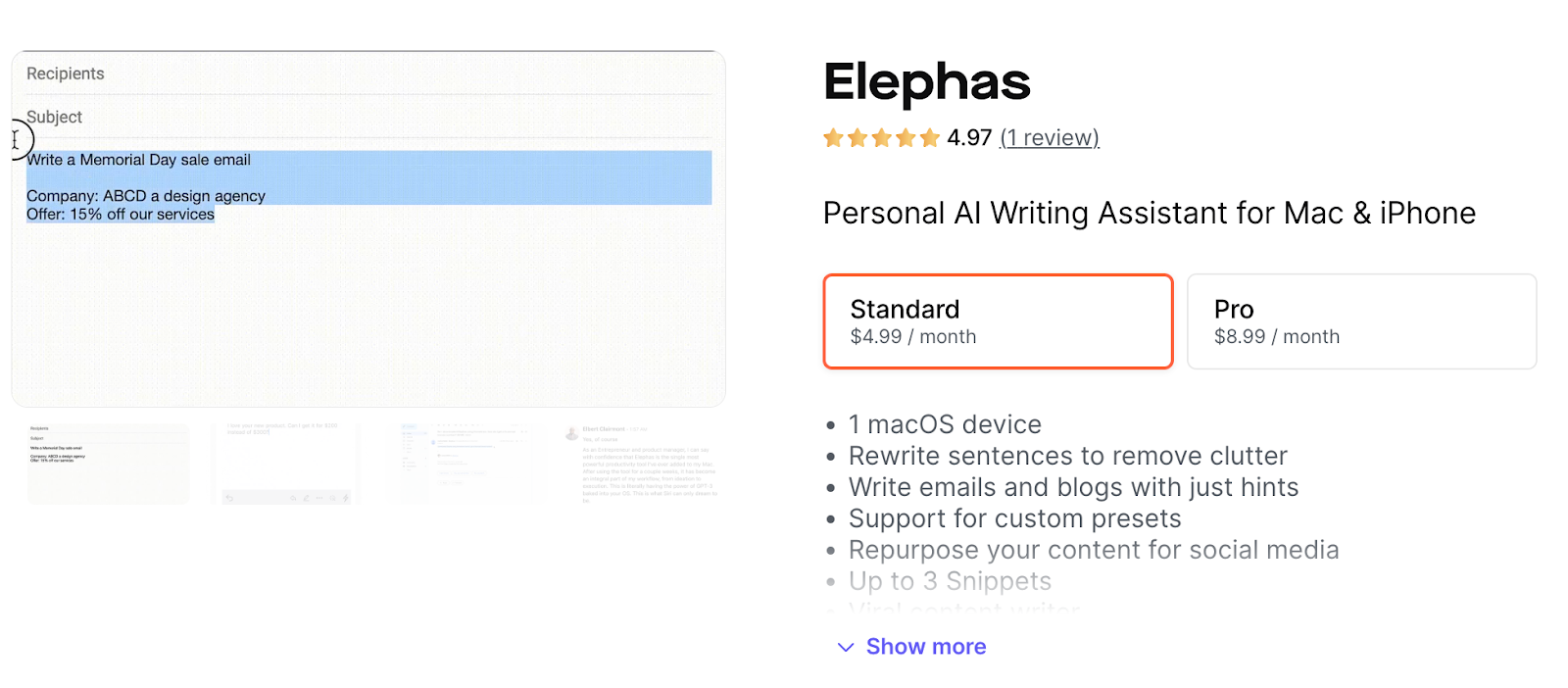
One-off purchases
Unlike subscriptions, one-off purchases take one payment from customers and, after that, they have full access to your product. The advantage of this model is you can create a product upfront and continue to sell it over and over again without having to put in additional effort. The downside is you need to generate fresh custom every month to keep revenue high.
Here are some one-off product ideas to inspire you:
- Digital products: Downloads, templates, and ebooks can demand high rates if they solve a particular pain point.
- Prints and artwork: If you’re a dab hand at creating something beautiful, consider selling prints of your artwork online.
- Physical products: While there’s a little more that goes into selling physical products, such as manufacturing and potentially complex supply chains, they can be a great way to build a loyal customer base (plus it’s always nice seeing your products in the wild).
- Online courses: Products like courses, workshops, and masterclasses can highlight your expertise and help people learn a new skill or solve a specific challenge.
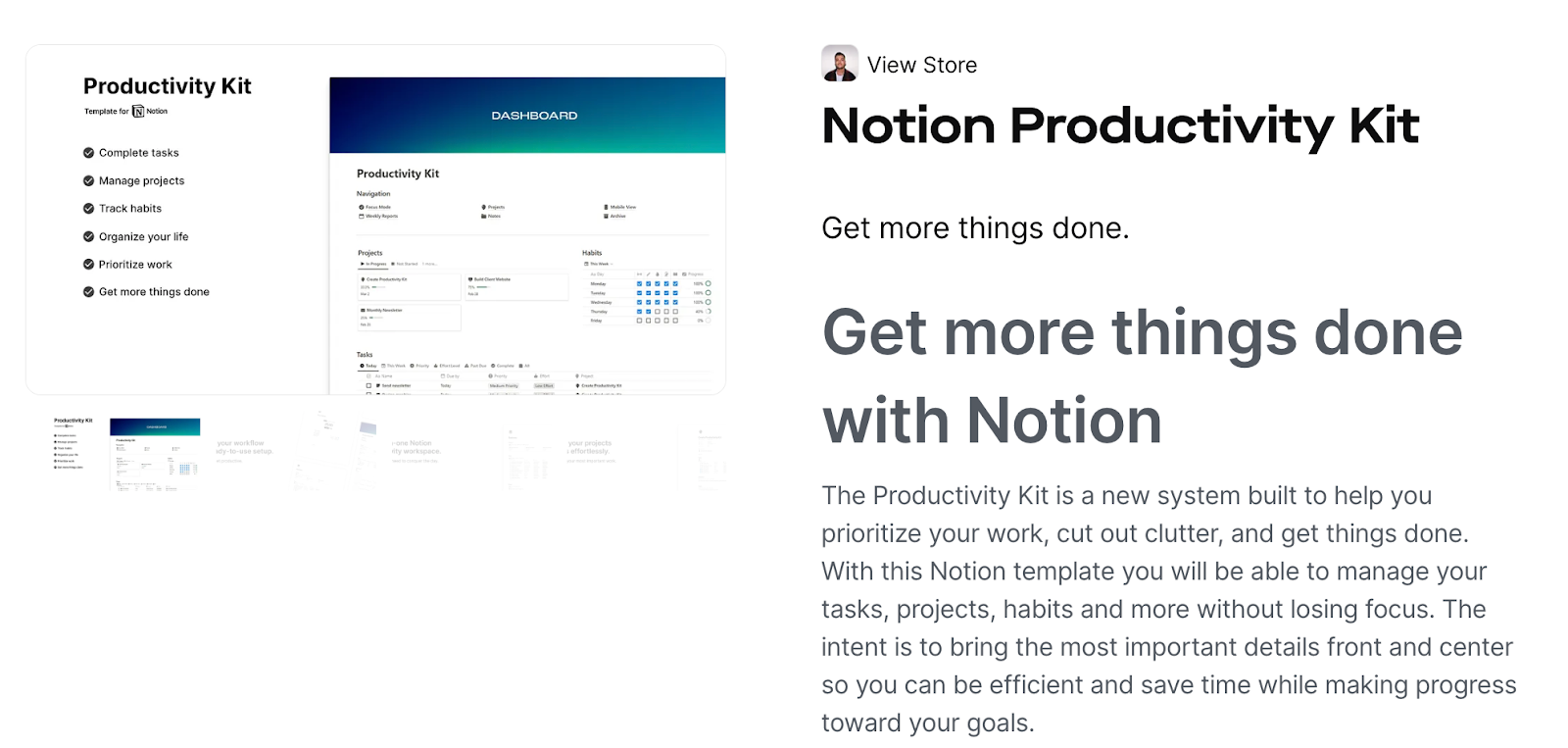
Find an in-demand product
Whichever business model you settle on, make sure there’s demand for your product and the format you deliver it in. For example, an online yoga course might sell better than an ebook about yoga because people want actual guidance and videos are the best way to do that.
4. Make Your Online Store
Your online store will be the home for your products. This is where customers will come to decide if they want to buy and, if they do, make a purchase. There are several ways you can create a home for your products depending on your website-making skills, your audience, and the type of product you sell.
Set up your own website
The obvious option is to create a website for your products. You can use a platform like Shopify or WooCommerce to build a website with its own unique URL.
The pros of setting up your own website
- A home for your products that you own — it’s unlikely to get shut down
- You get full control over what your website looks like
- It adds a sense of professionalism to your business
The cons of setting up your own website
- It can be time-consuming if you don’t know what you’re doing
- It can be costly depending on the platform and plugins you use
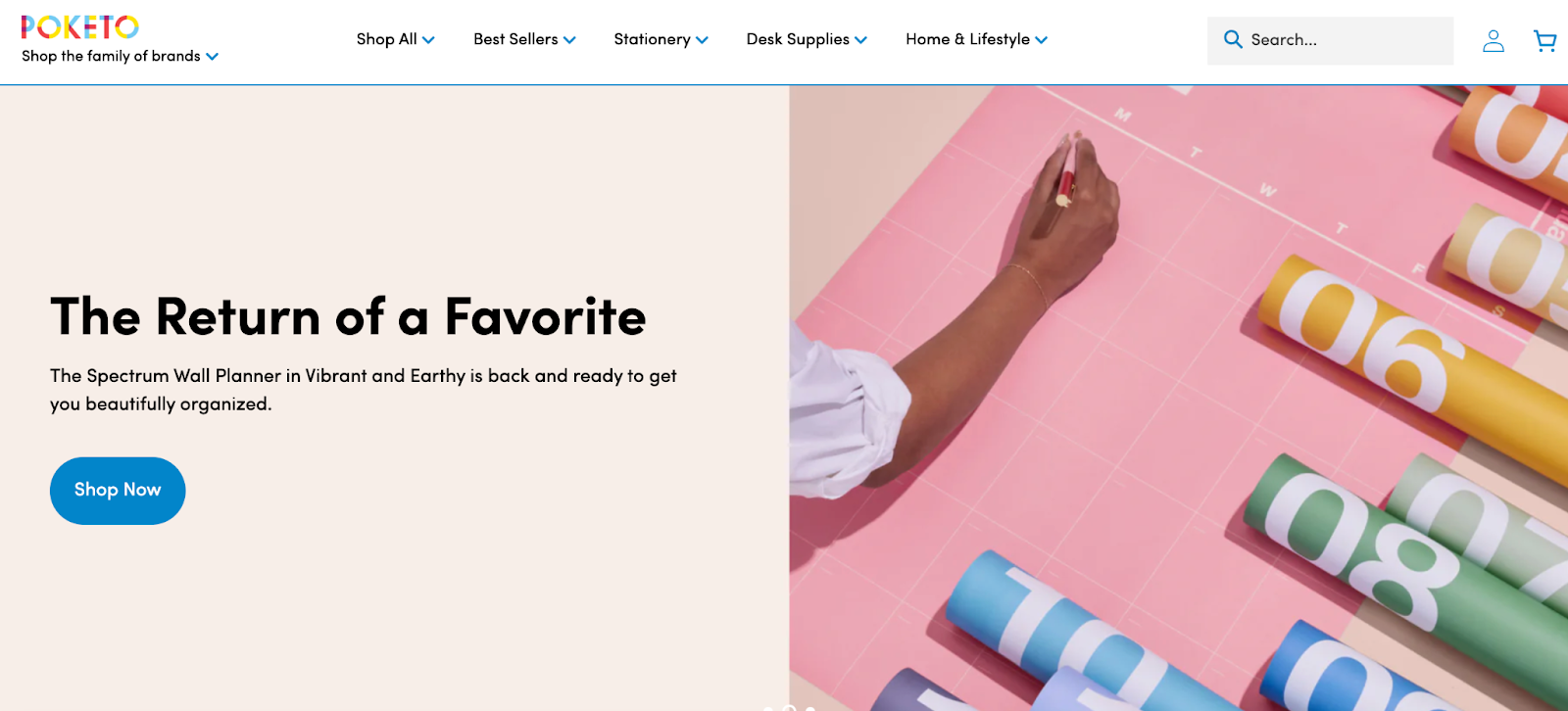
Sell solely on social media
Today’s social platforms have their own native shopping features, including TikTok Shop and Instagram Shopping. These features let users buy products directly through their social accounts without leaving the app.
The pros of selling solely on social media
- Target your audience where they’re already hanging out
- Remove friction from the process by allowing in-app purchases
- Easy setup and no need to create your own website
The cons of selling solely on social media
- You don’t “own” your store and it can be shut down at any moment
- It’s difficult to add your own branding to social media stores
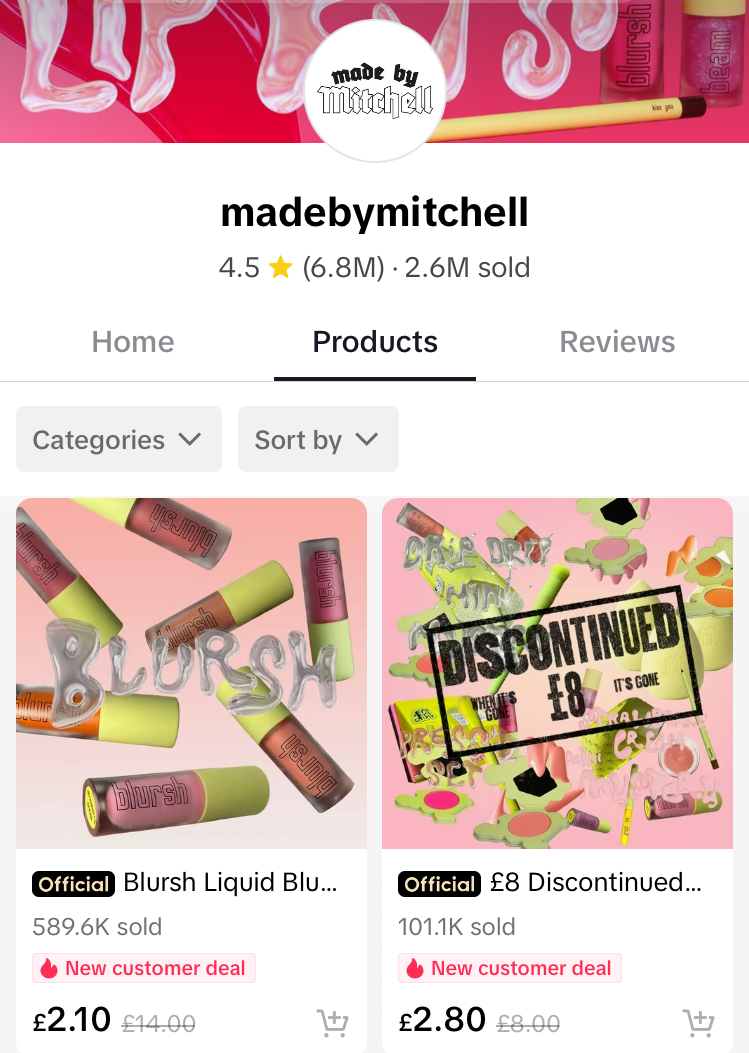
Create a storefront on an ecommerce platform
Listing your products on dedicated ecommerce marketplaces like Whop and Amazon can help you reach new audiences and improve your product’s visibility. All you have to do is set up an account and upload your products, and the platform does the rest, including handling payments (which, let’s face it, can be a bit of a headache).
The pros of creating a storefront on an ecommerce platform
- Added visibility via the search results
- Easy to get set up and started
- Increase your reach to people who may not have otherwise found your products
The cons of creating a storefront on an ecommerce platform
- Added competition if there are other, similar products
- You don’t “own” your website and you’re at the mercy of the platform’s updates and changes
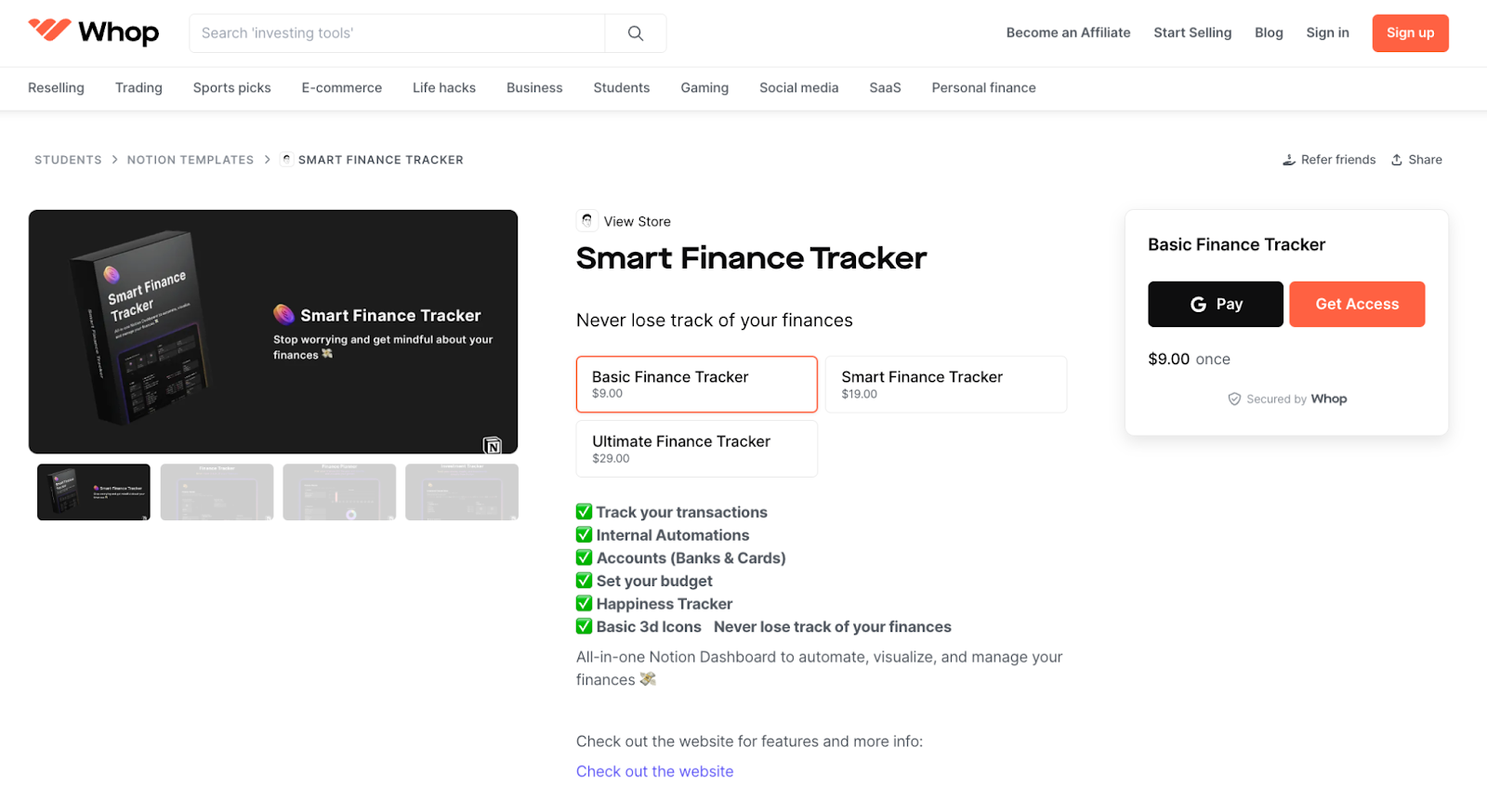
Before you decide where you’ll sell your products, thoroughly research your options. Make use of free trials, read reviews, and check the fees, as some solutions can take a large cut of your earnings.
5. Choose Your Sales Channels
Now it’s time to decide which sales channels you’ll use. Whether you’ve set up a dedicated online store or are planning to sell solely through social media, it helps to have a couple of sales channels working in tandem. This relieves the pressure from your main channel.
For example, if your website goes down for a day, you can still make sales through another channel. Or, if your social media account is suspended for a week, you won’t lose out on a chunk of revenue.
The best sales channels are those where your audience is most likely to hang out. You might decide to use a mix of social shopping features and an online store, or you might choose to sell through your own website and a marketplace and direct traffic from your social media channels to these places.
Here are some sales channels to choose from:
- Your own website
- Ecommerce marketplaces like Whop
- TikTok Shop
- Instagram Shopping
- Mobile apps
6. Set Up Payment Processing
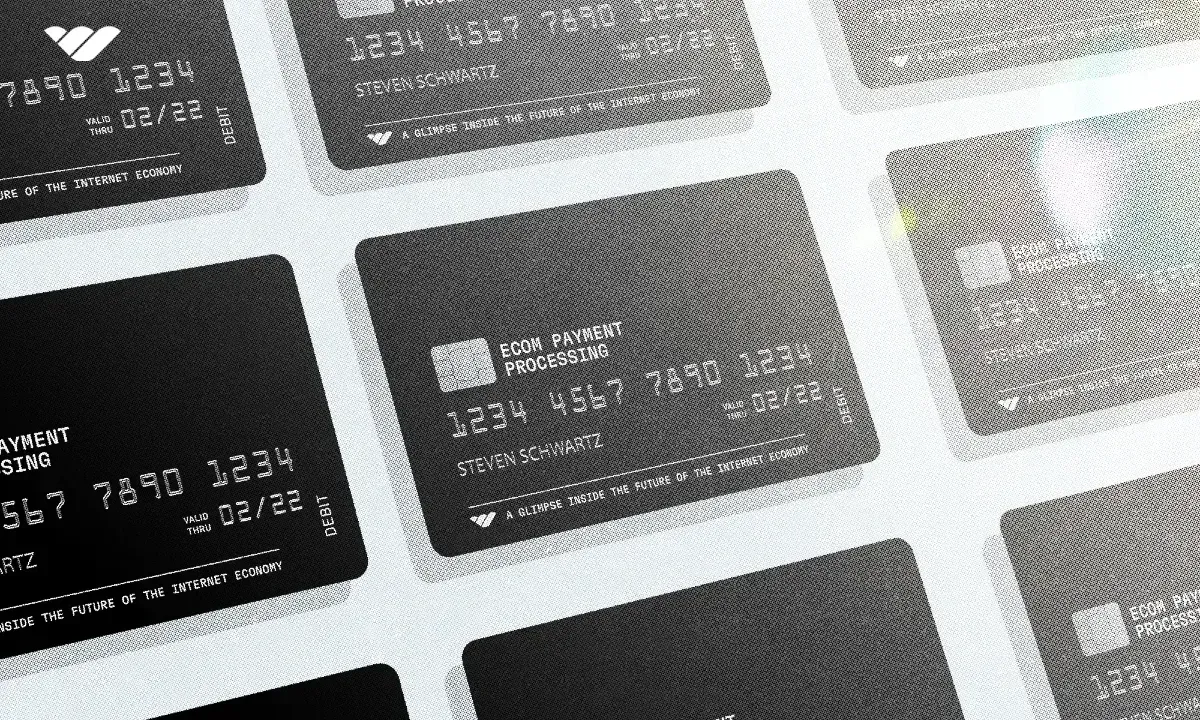
It should be as easy as possible for customers to buy from you, which is why it’s important to accept global currencies if you don’t want to be limited by location.
Most platforms make it pretty easy to accept payments, but here’s what you need to make sure the buying journey is as smooth as possible.
A streamlined checkout
Customers can’t purchase if there’s no checkout. Make sure your checkout is easy to navigate, is intuitive to use, and doesn’t overwhelm shoppers with too many form fields. Even better if you can offer a guest checkout option for speedy sales.
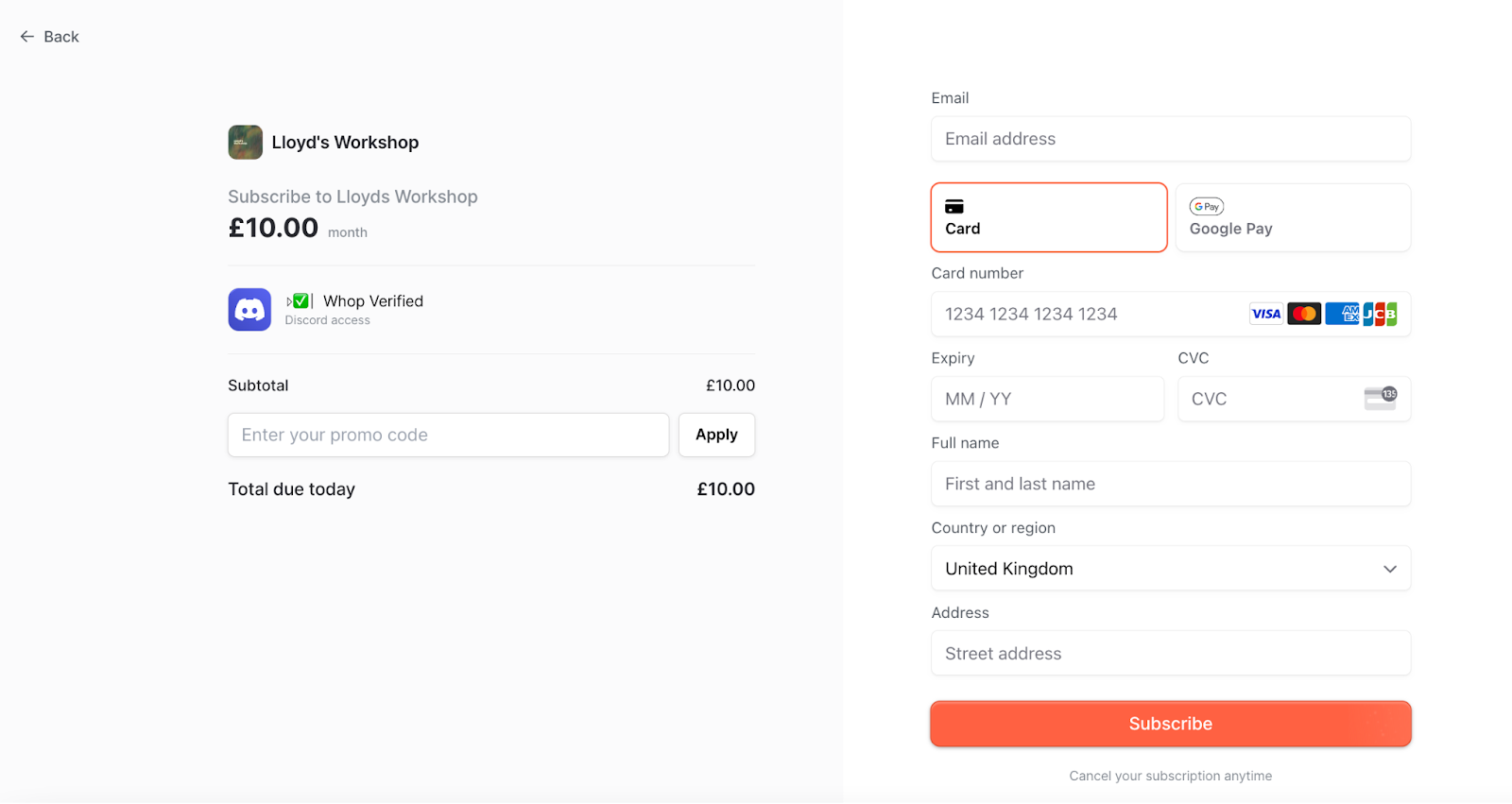
A payment processor
Payment processors take payments when you sell online. It essentially moves money from your customer's account to your merchant account safely and securely. Choose payment processors that allow customers to choose their transaction type, whether it’s through a third-party app like PayPal, a credit or debit card, or a digital wallet like Apple Pay.
A merchant of record (MoR)
A merchant of record is a legal entity that handles payments. It automatically adds and recovers sales tax regardless of where a shopper is based, but it also handles returns and chargebacks. This is critical if you want to sell to a global audience without the hassle of manually applying the relevant sales taxes to each purchase.
7. Set Up Shipping Methods
The fulfillment process describes how you fulfill each order, regardless of whether it’s an online or a physical purchase. You still need to set up shipping even if you’re selling digital products (you need to deliver the product to the customer somehow).
Let’s look at a typical fulfillment process:
- Receive a new order
- Process the order
- Deliver the product
When you’re handling physical products, you need to sort out shipping to deliver the product. You’ll want to choose a shipping or logistics company that meets your needs and allows you to deliver to a global customer base without exorbitant fees.
And, if you’re selling digital products, you’ll need to figure out how you’ll deliver the product to the buyer. Will you attach it to an email? Create a direct download? Or provide access to a secure online portal?
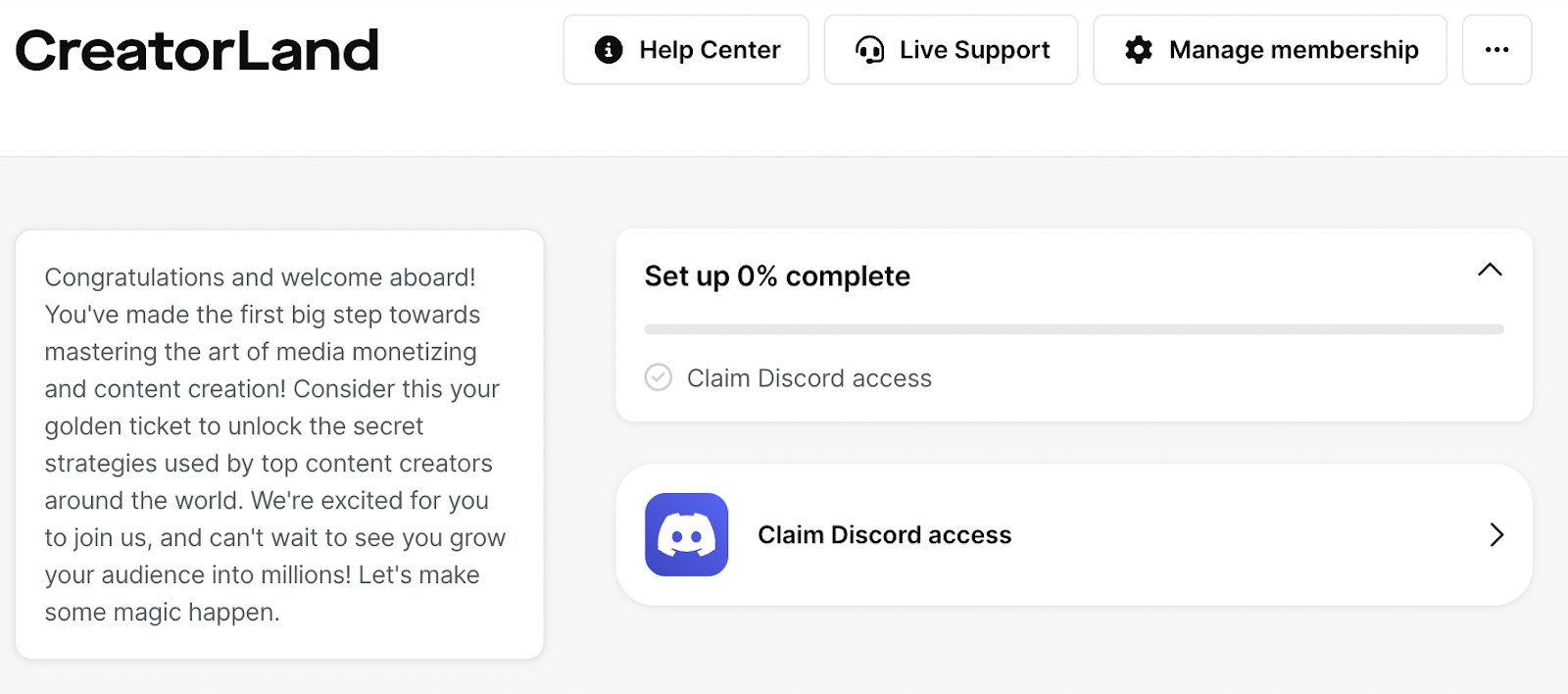
8. Promote Your Products
Now the fun can begin. With all the logistical stuff sorted, it’s time to put your product out there. The strategy you use to promote your products will determine how many sales you make and how much visibility you get in the early days. We recommend choosing two or three marketing strategies to start with so you can really focus your efforts on growing sales.
Here are some ideas to get you started.
Search engine optimization (SEO)
Optimize your website content to include relevant keywords. This will help shoppers find your website and products through the search results, but you can also do the same on ecommerce marketplaces.
You can discover relevant keywords by researching your competitors (what words do they use to describe similar products?) and using a keyword research tool to find the words your customers are using in search engines. Add these keywords to your product pages and create fresh blog posts that target these terms.
Social media marketing
Choose a couple of social media channels to share your products on and develop a consistent promotional strategy for each channel.
Here are some ideas:
- Create videos that show your products in action or the behind-the-scenes of how they’re made
- Share testimonials and reviews to generate social proof
- Engage with your target audience by asking questions and running polls
- Post consistently on your feed and use hashtags to reach new people
- Join existing, relevant discussions to build your authority and expertise
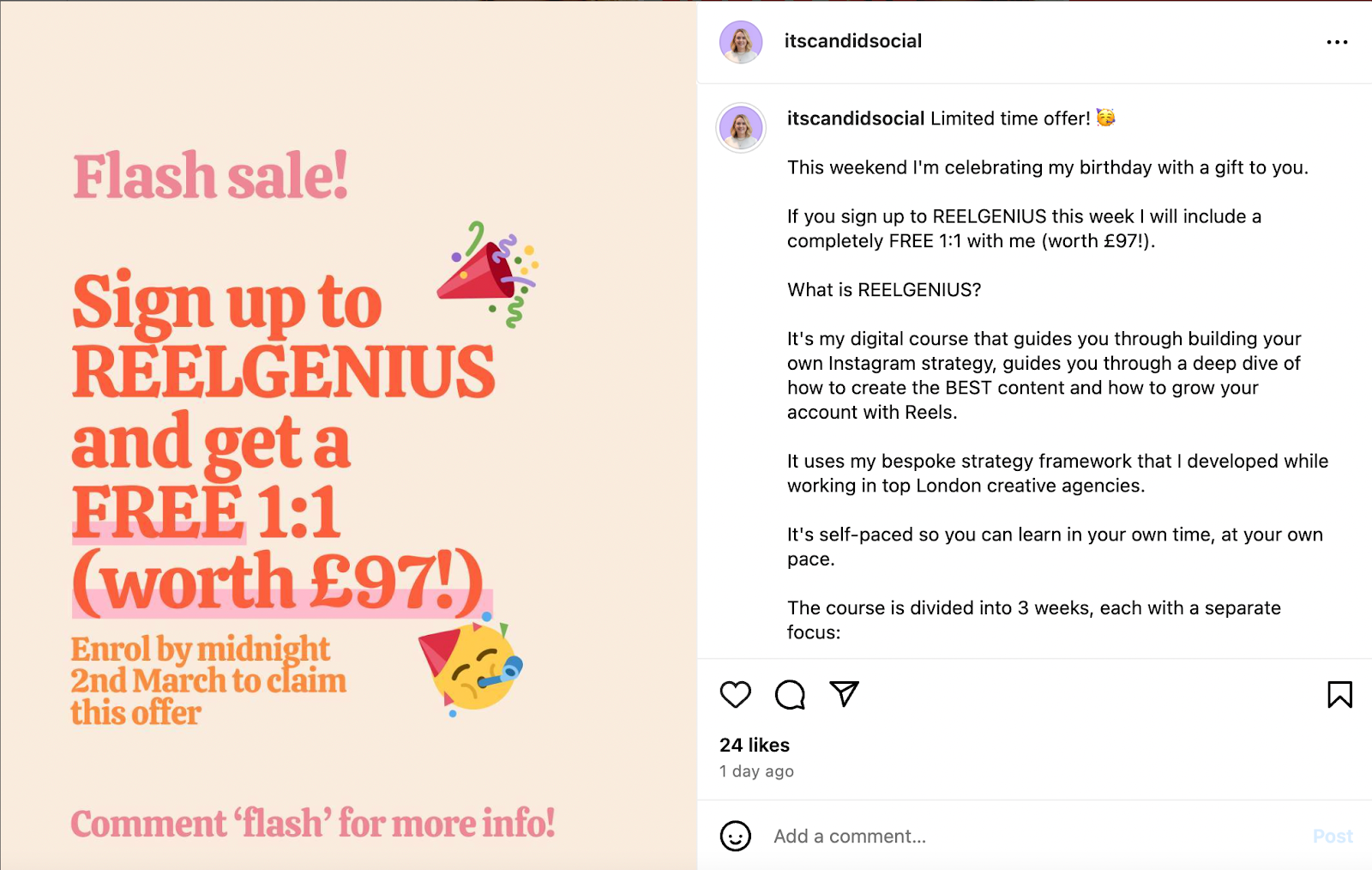
Email marketing
Every time someone visits your website or product page, direct them to an email signup so you can continue to make contact with them even after they’ve left your page.
With email marketing, you can:
- Offer discounts and exclusive content to subscribers
- Run pre-sale events to your most loyal fans
- Announce the latest product launches
- Nurture existing customers with personalized content
- Drive repeat purchases by staying front of mind
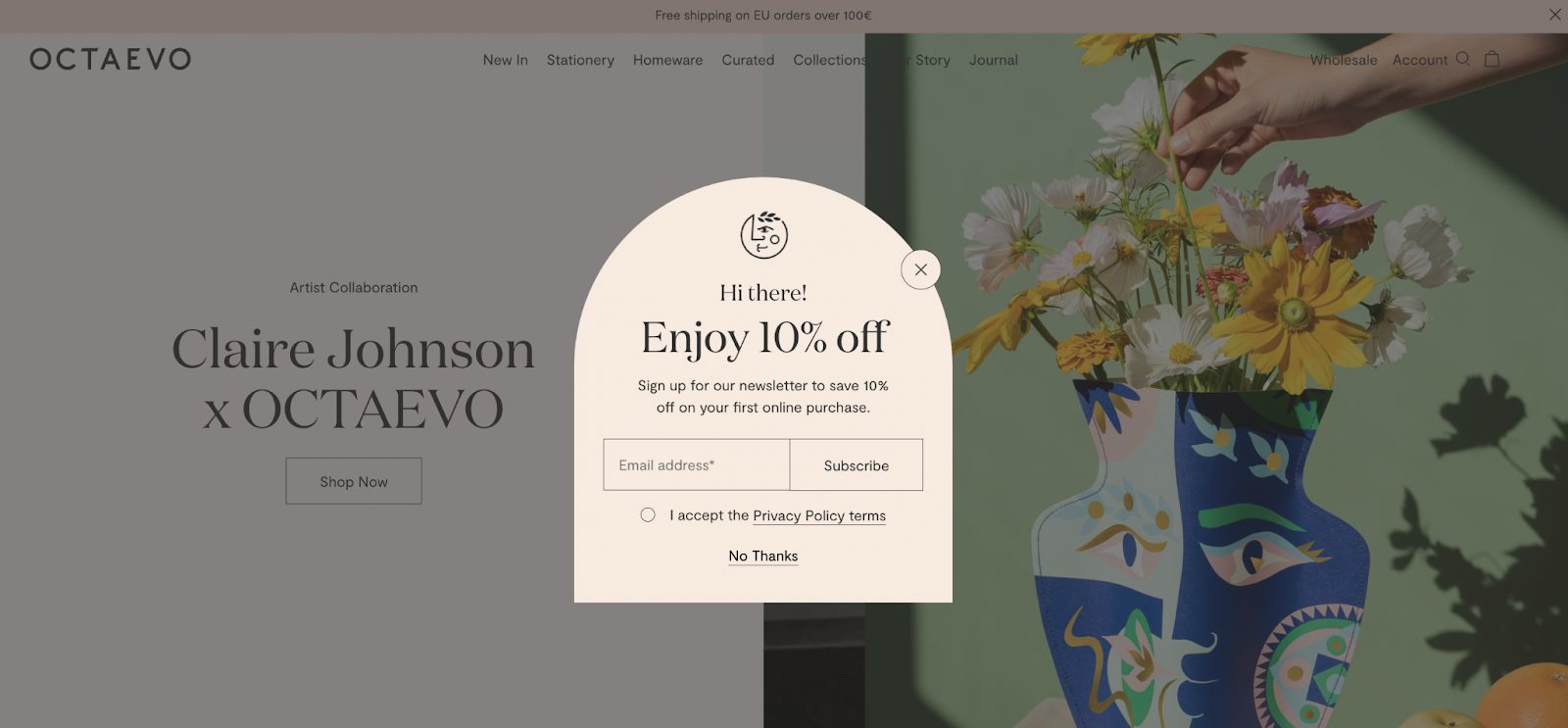
Influencer marketing
Don’t have an audience? With influencer marketing, you can tap into the existing audience of a trusted industry account. Partner with relevant bloggers or social media users who have an audience that matches yours. This can grow your visibility and extend trust and credibility to your brand.
Here are some ways you can promote your products with influencer marketing:
- Create unique discount codes for influencers to share with their audiences
- Work on an affiliate basis with influencers so they get a slice of commission for every sale they make
- Build a library of user-generated content you can use in your other marketing activities
- Partner with both big and small influencers to reach a diverse range of people in your target audience
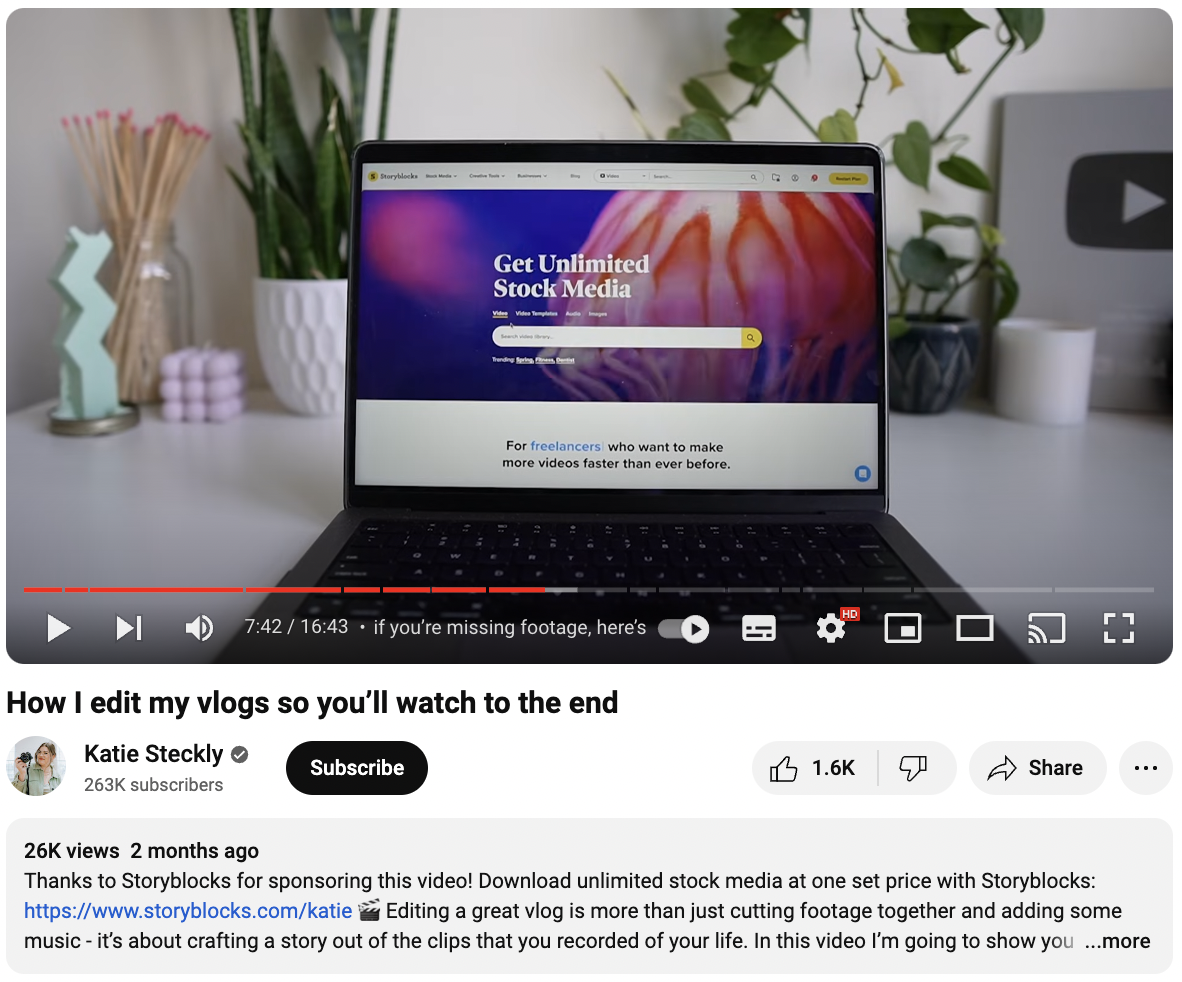
Paid advertising
Platforms like Google Ads and Facebook Ads offer incredibly targeted advertising options so you can reach the right people. Create campaigns that showcase the benefits of your product and target people who match your audience’s demographics, interests, and online behaviors.

9. Manage Your Business

It might feel like the hard part is out of the way once you’ve created your products, set up your website, and started advertising, but things don’t stop once you’ve made your first — or second, or 100th — sale.
Running a successful business requires diligent management and consistent maintenance. Unless you want to be a flash in the pan, follow these tips:
- Respond quickly to customer questions and answer queries in as much detail as possible. Addressing hesitations and objections upfront makes for a smoother sales process.
- Set up and simplify your returns process to encourage repeat purchases and build trust with your customers.
- Stay in touch with customers after they’ve parted with their money via order updates and shipping notifications.
- Ask customers to leave ratings and reviews about their experience so you can display them on your website or use them to improve product development.
- Add a personal touch with handwritten notes or personalized product recommendations for existing customers.
- Reward your best customers with loyalty points or exclusive discounts and deals.
Start Selling Your Products Online with Whop!
If you're searching for a way to sell a product that is in high-demand, easily scalable, and has low overheads, then why not sell digital products?
As the creator economy grows so does the demand for digital products, with more and more people turning to online communities, courses, downloadables and other resources to develop their skillsets and join the digital revolution.
When you choose to sell with Whop you are supported every step of the way. With Whop you can create an online storefront for free and pay only 3% on transaction fees when your product sells. You also have access to a powerful database, complete with marketing tools like affiliate marketing programs, metrics like customer retention and churn, and even responsive customer service support and a dispute resolution center.
So, if you choose to sell digital products online, then choose Whop. With industry-leading fees, a popular marketplace, and incredible customer service, Whop helps you to launch and grow your business. Start selling online today with Whop!

Top tips for selling online
Set yourself up for success by following these tried-and-tested best practices.
- Make your online store user-friendly: Make it easy for shoppers to find the products they want and create a friction-free checkout process.
- Invest in SEO: SEO is a long game, but if you start early you can begin to climb up the search results for relevant keywords.
- Start an email list: Encourage shoppers to join your email list with an incentive. Don’t forget to stay in touch with subscribers via regular newsletters, product updates, and exclusive offers.
- Offer buy now, pay later options: Give shoppers financial choice by letting them buy your product now and either pay later or pay in installments.
- Optimize your product pages: Ensure your products are presented as best as possible with high-quality images, personality-led descriptions, and rich media content, like videos, reviews, and UGC.
- Create a content marketing strategy: Continue to spread the word about your products with new blog posts and social media updates that drive shoppers to your online store.
- Incorporate stellar customer service: Ensure you have a quick and painless way for customers to get in touch to ask questions or share an issue.
FAQs: How to sell products online
What is the best way to sell items online?
The best way to sell items online is to create an online store where you can list your products for sale. Customers can then browse your product catalog and go to the checkout where they can make a purchase.
What is the best site to sell products online?
Whop is a marketplace for digital products, like online courses, software, masterclasses, and templates. If you’re selling physical products, you can list them on sites like Amazon and Etsy.
How do I start as an online seller?
- Scope out your market and research the competition
- Create a buyer persona to determine who you’ll market to
- Decide on your product and the format it’ll take
- Create an online store or list your product on a marketplace like Whop
- Choose your sales channels and set up payment processors
- Promote your products to your target audience
What is the most profitable thing to sell online?
The most profitable thing to sell is something that doesn’t cost you a lot to create but that sells for a relatively high price tag. Digital products are great for this because the upfront costs are relatively small — you don’t have to pay for manufacturers, materials, or inventory storage.
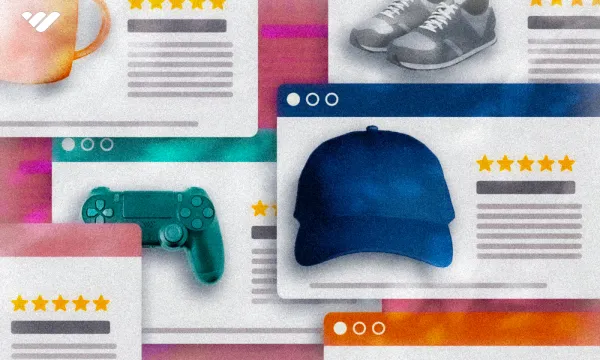

![Top 23 best dropshipping Discord Servers [July 2025]](/blog/content/images/size/w600/2024/02/Top-Dropshipping-Discord-Servers--1-.webp)
![Top 16 best ecommerce Discord servers [July 2025]](/blog/content/images/size/w600/2023/09/ecommerce-groups.webp)

